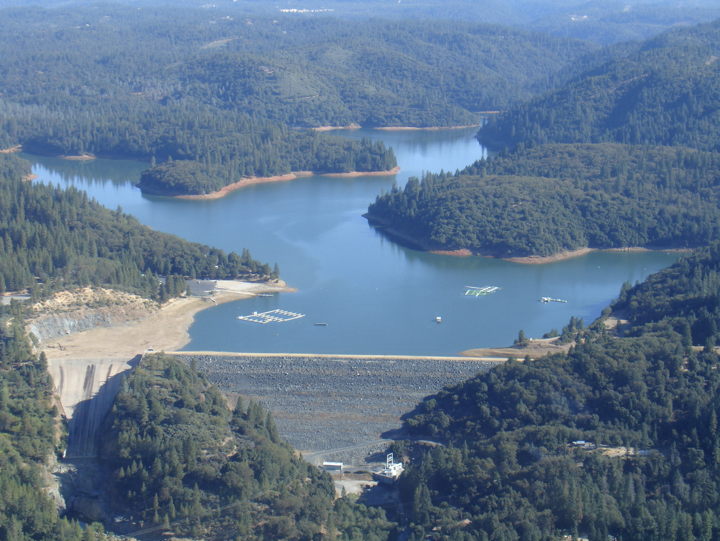From Archimedes Water Screws to Modern Hydroelectric Plants - The History of Hydropower

Hydropower is an energy source that has been around since ancient times. Because it is fueled by water, hydroelectricity is a clean source and doesn’t pollute the air like power plants that burn fossil fuels, such as coal or natural gas.
NID is proud to generate this reliable renewable energy that benefits the environment. Our District is a leader among Northern California water agencies, and through the operation of seven hydropower plants, we generate enough electricity to supply about 60,000 homes.
Of course, today the District depends on the most modern technology. Yet the history is fascinating and allows us to appreciate the journey to develop such a clean, reliable source to meet our everyday needs for power.
Water Wheels and Archimedes Screws
For thousands of years, water wheels have aided in hydropower production, proving to be a dependable source for providing energy. Water wheels were first referenced around 4000 BCE when a Roman engineer named Vitruvius was credited with creating and using a vertical version of a primitive turbine. Since then, water wheels have been used for crop irrigation, grinding grains, and supplying water to villages.
A water wheel consists of a rotating wheel with wooden paddles built around it. This allows running water to flow through the device to a water source below. The water forces the wheel to rotate, navigating through a shaft. This process allows its axle to derive the energy produced, which then transfers to nearby machinery for operation. Water wheels have set the foundation for early power generation, leading to new technological advances, such as turbines.
In the third century B.C., Archimedes screws were used by Egyptians for irrigation purposes. The Archimedes screw was a circular pipe enclosing a helix and inclined at about 45 degrees. The lower end dipped into water, and the device's rotation caused the water to rise in the pipe. This mechanism effectively lifted water from a lower to a higher level.
The device is thought to be invented by Greek scientist Archimedes to remove water from a large ship's hold. The King of Syracuse commissioned Archimedes to build the largest ship possible, but it was problematically leaky when completed. To solve the issue, he designed the screw, which effectively solved the problem by getting rid of the water in the hull with only one person operating it. Advanced versions of Archimedes Screw are still in use today.
Architecture Hydraulique
Modern hydropower became evident in the mid-1700s, giving the need for an in-depth explanation and depiction of what it entailed. Architecture Hydraulique was written by French hydraulic and military engineer Bernard Forest de Belidor. He assembled a four-volume text that covered many topics such as engineering mechanics, mills and water wheels, pumps, harbors, and sea works. This work ushered in the hydropower turbine. He applied rational reasoning for each of the many facets, giving the world a better understanding of generating power from the force of water.
Early Hydropower in the United States
The world's first hydroelectric power plant began operation in the United States on the Fox River near Appleton, Wisconsin in 1882. This historical occurrence was a leap in the right direction of generating clean energy for our country and building its infrastructure today.
The formation of the first hydropower plant has led to 1,450 conventional and 40 pumped-storage plants operating in the United States as of 2021. Hydropower continues to lead our country in efficient energy production.
NID's First Hydropower Plant
NID began producing electricity in 1965 with the completion of the $65 million Yuba-Bear Power Project. Today, NID's hydropower facilities include 7 plants, 13 reservoirs, and 20.75 miles of pipes, flumes, tunnels, and open ditch canals.
NID is focused on generating clean, hydroelectric energy. We are a leader of hydropower generation across Northern California's water agencies. Our seven plants can produce enough energy to supply the equivalent of 60,000 homes and are located throughout the District in Chicago Park, Dutch Flat, Rollins, Bowman, Combie South, Scotts Flat, and Combie North.
Powering Our Future
Hydropower is an efficient source of clean energy that dates back thousands of years and has real practical benefits today. NID customers can feel good that their clean energy needs are taken care of by a District that is ahead of the curve in generating consistent service year after year.
